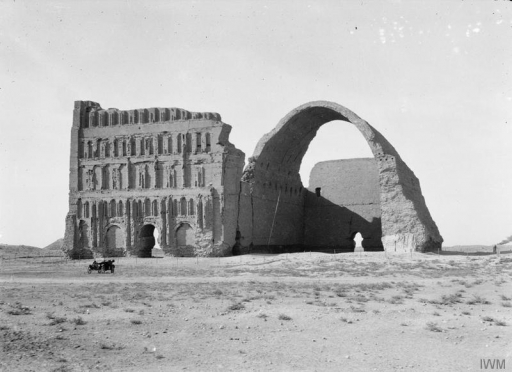British and Indian troops were halted in their advance towards Baghdad at the Battle of Ctesiphon from November 22nd-25th 1915.
Soldiers of the colonial Indian Army had captured a series of towns in Turkish-ruled Mesopotamia (present-day Iraq), since occupying the city of Basra in November 1914 to protect oil supplies.
But they were confronted with well defended Ottoman positions at Ctesiphon, around 20 miles (32kms) from Baghdad.
The First World War battle takes its name from the ruins of an ancient Mesopotamian city, located on the River Tigris and dominated by the remains of a massive brick archway built in the sixth century.
The outnumbered Indian Expeditionary Force had been ordered to push towards Baghdad, despite the concerns of its commander, Sir Charles Townshend, about lengthening supply lines.
With the Allied campaign faltering at Gallipoli, senior British ministers were eager for a success in the war against the Ottoman Empire.
Heavy losses
Both sides suffered heavy losses during three days’ fierce fighting at Ctesiphon and decided to withdraw.
Major General Townshend fell back to Kut al-Amara, captured by his British/Indian force in September.
The Ottoman commander, Nureddin Pasha, was able to call on reinforcements and gave chase, laying siege to Kut in December.
The Indian Expeditionary Force held out for four months before surrendering in April 1916.
Kut and Baghdad were both captured during a renewed British-led offensive in 1917.
Sources: Wikipedia/various
Image courtesy of Imperial War Museums (© IWM Q 24446)
Posted by: Peter Alhadeff, Centenary News
